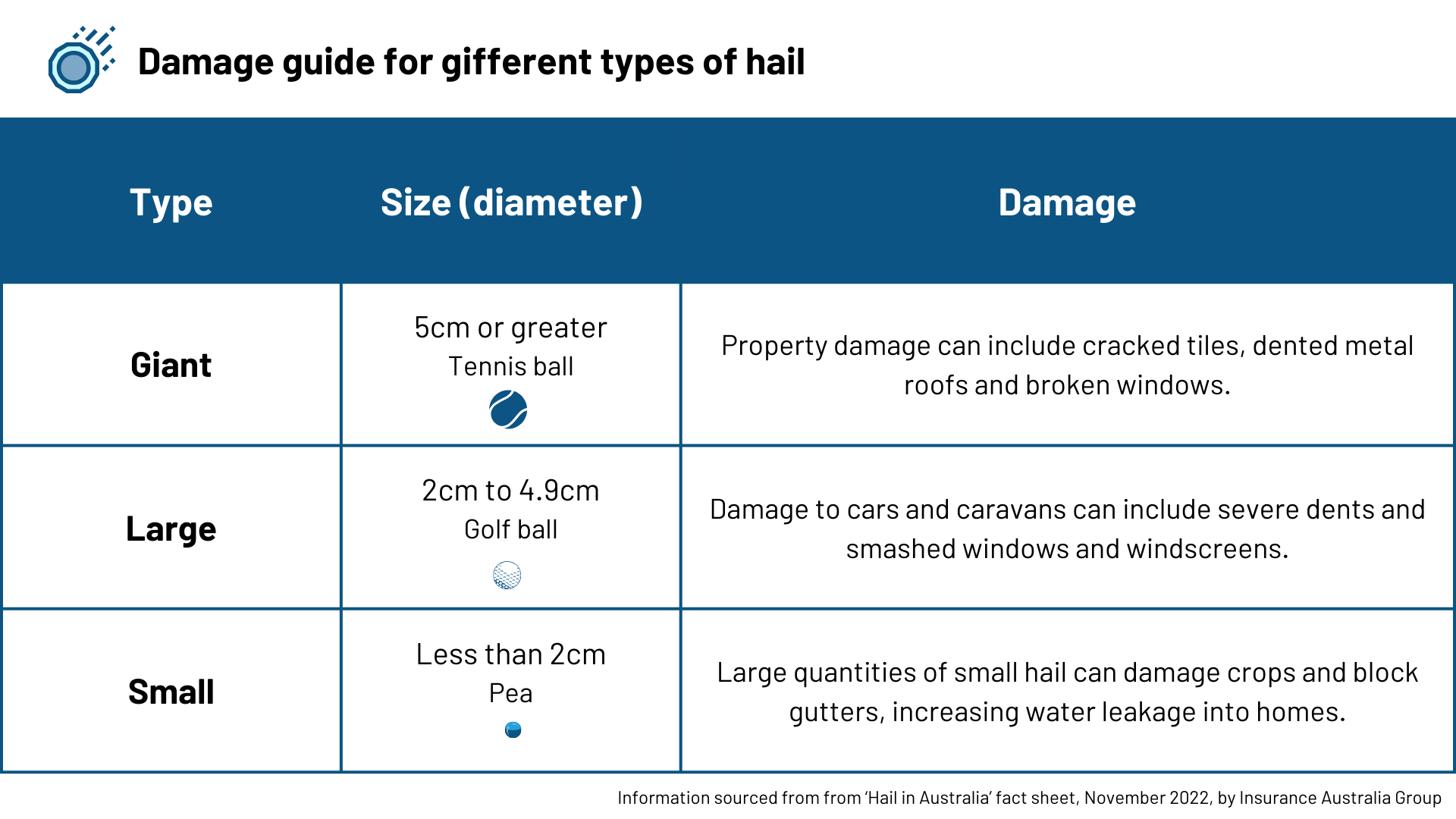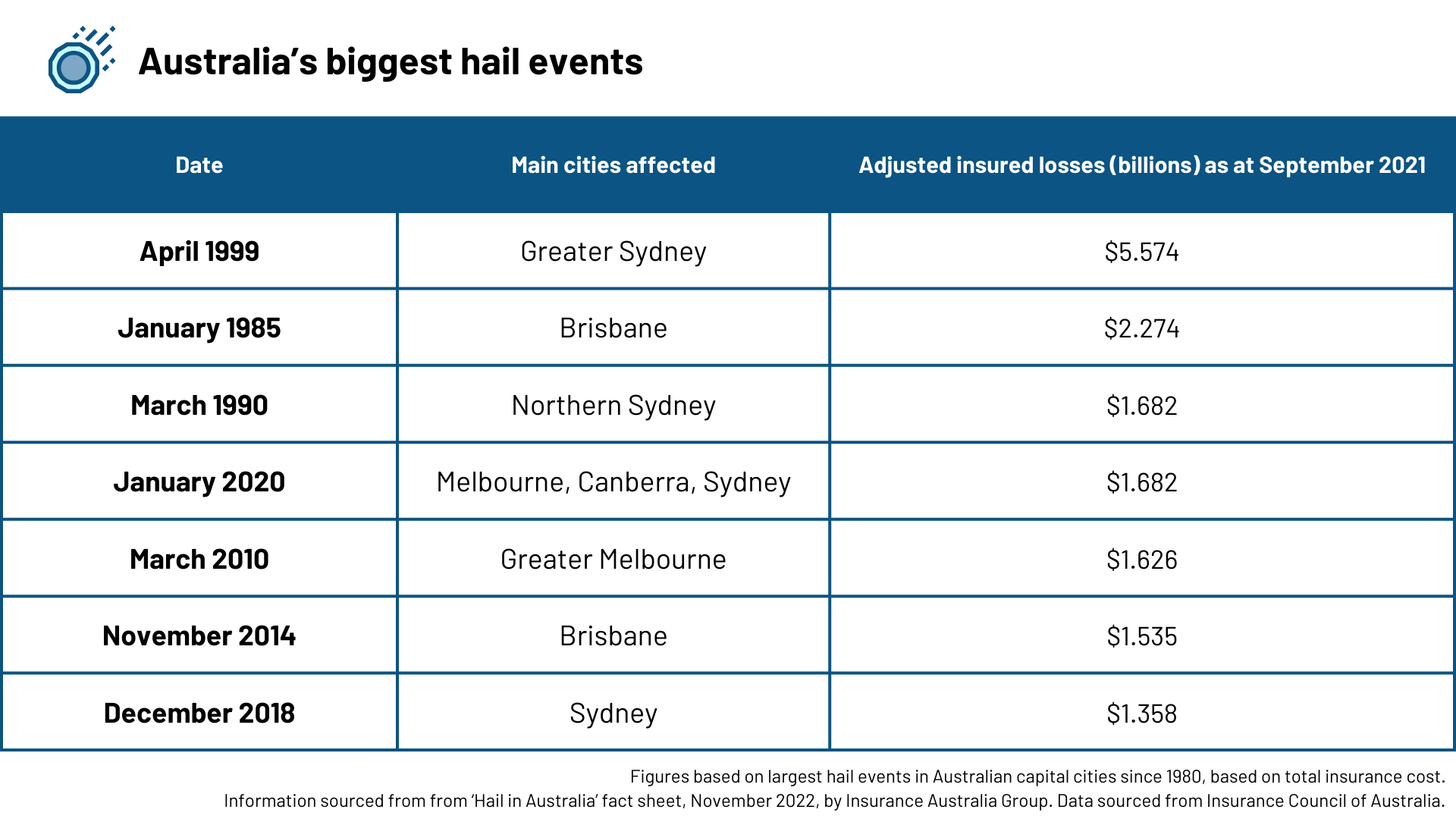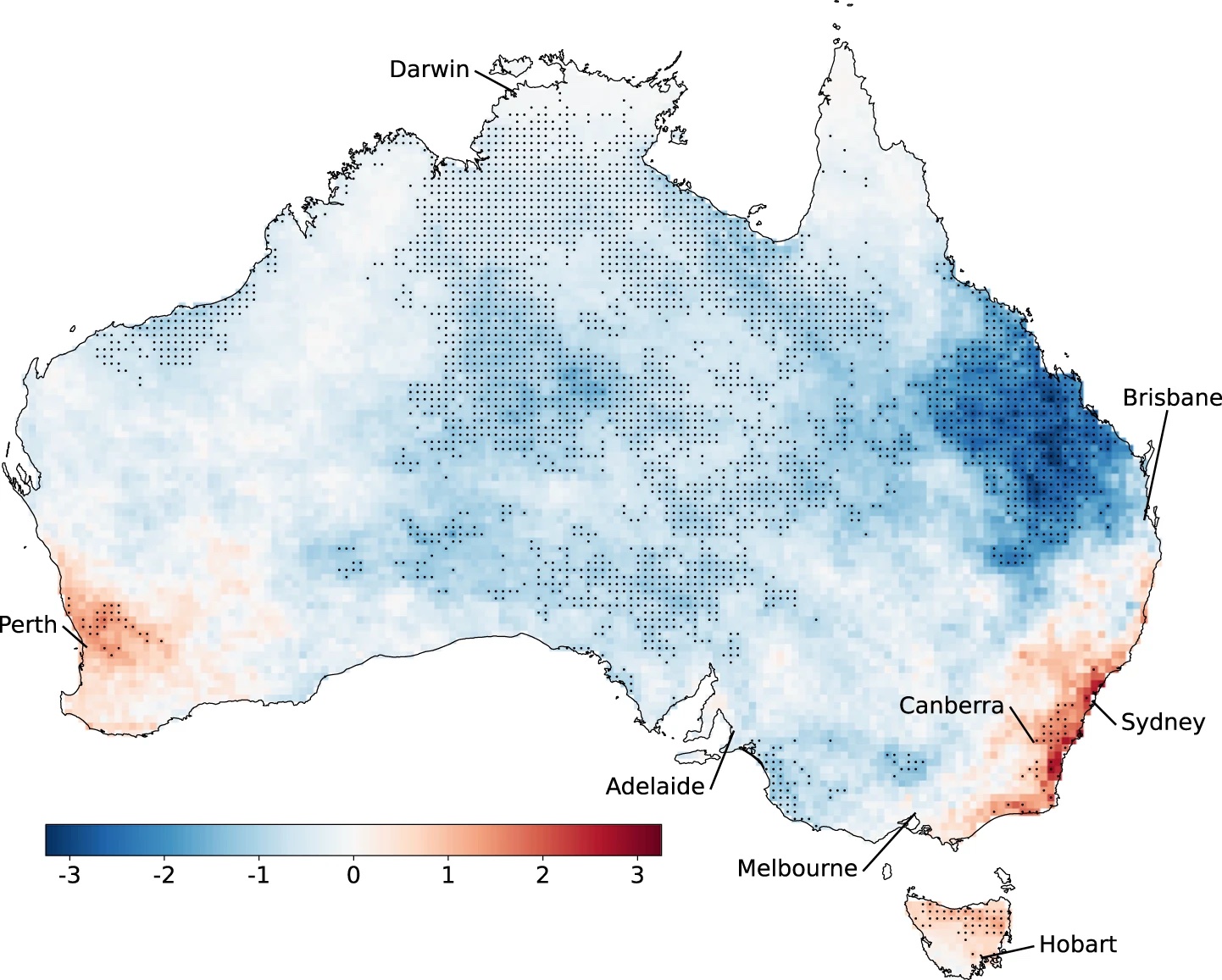Hail events are increasing in some Australian cities
Hailstorms are one of Australia’s most costly natural disasters and new research suggests that they are becoming more frequent in some of Australia’s largest cities.
What is hail?
Hailstones are made of layers of ice which form in thunderstorm updraughts. Hailstones grow larger by colliding with other rain droplets and ice particles in the updraft, until they become too heavy to remain suspended in the air and fall to the surface.
There are several ingredients required for large or giant hailstones to form;
- Sufficient supercooled liquid water in the atmosphere.
- A very strong updraught allowing the hail to remain suspended in the air, enabling the stones to grow.
- Wind shear (change in wind direction and speed with height) can help create the types of severe thunderstorms that produce hail.
Hail varies in size, with the larger hailstorms typically causing the most damage.

Severe thunderstorm warnings are issued in Australia for large hail above 2cm in diameter, and giant hail above 5cm in diameter.
Economic impact of hail in Australia
Hailstorms are common across Australia, and they are costly natural hazard that can cause injuries and extensive damage to homes and property.

The table below shows that the Sydney hailstorm in 1999 was the most expensive hail event in Australia, with 5.574 billion dollars of insured losses recorded in September 2021.
This was one of the costliest events ever recorded for insurance companies, followed by the Brisbane hailstorm in 1986.

Trends in Australian hail events
A new study has found interesting trends in the number of hail days in Australian capital cities in recent decades.
The map below shows the trends in the annual number of hail prone days across Australia during the past four decades. The dominance of blue shading on the map shows that hail days have decreased for most of Australia. However, there are some areas where hail days have become more frequent, especially in the southeast and southwest.

Image: Trends in annual hail-prone days (in days per decade) between 1979 and 2021. Sourced from ‘Changes in hail hazard across Australia: 1979–2021’ via npj Climate and Atmospheric Science (npj Clim Atmos Sci) | ISSN 2397-3722 (online)
Over the period from 1979 to 2021, the number of hail days has increased in Sydney, Perth, Canberra and Hobart. By contrast, Darwin and Adelaide have seen a reduction in hail days over the same period. The study found no statistically significant trends in hail days for Melbourne and Brisbane.
Hobart has seen the quickest increase in the number of hail days, with the capital observing around a 20% increase per decade between 1979 and 2021. Sydney, Perth and Canberra’s hail days increased by around 10% per decade over the same period.
While the study did not explicitly address changes in hailstone size, it noted that eastern and southeastern Australia has seen an increase in large hail in recent years.